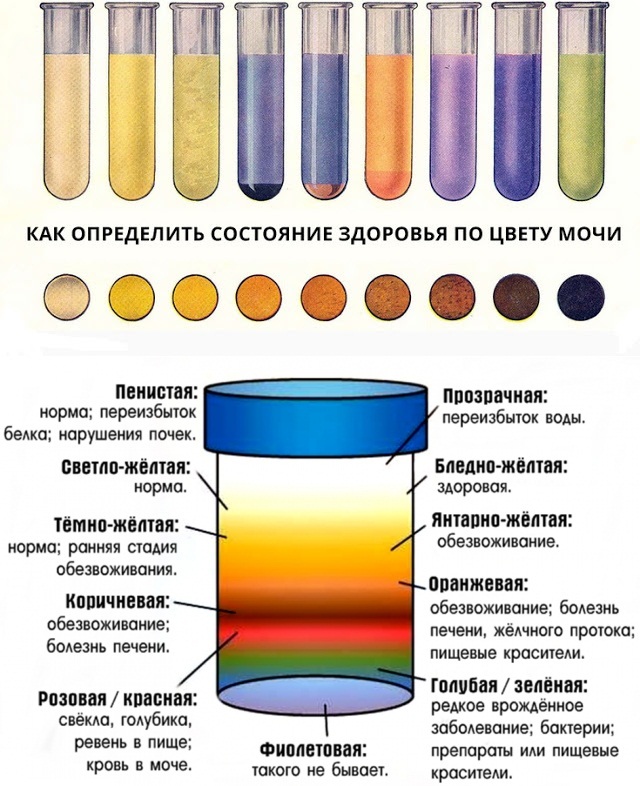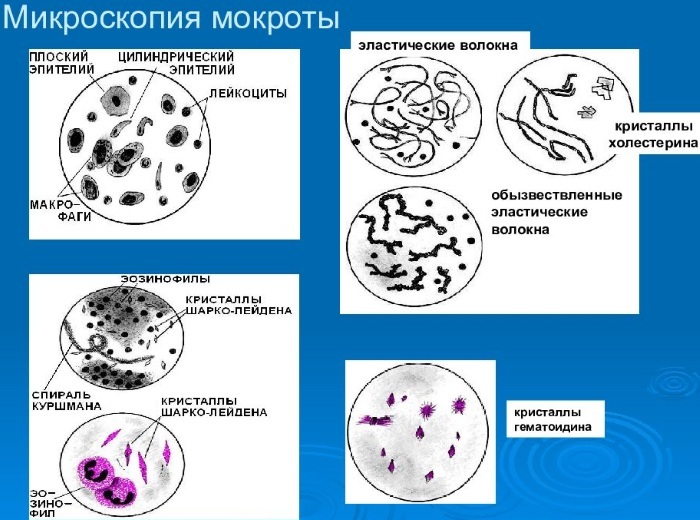Gluten intolerance or celiac disease (celiac disease), as the disease is officially called in medicine, is an ailment associated with indigestion caused by damage to the villi located on the mucous membrane of the small intestine, some foods containing a certain type proteins.
This pathology appears as a result of genetic malfunctions in the body and has a mixed genesis: autoimmune, allergic and hereditary. Due to the lack of special enzymes, proteins, including gluten, are not completely broken down in the intestine. containing gliadin, as a result of an increase in protein levels, complexes are formed on the part of the immune system.
As a result, an inflammatory process appears, the intestinal mucosa atrophies, the absorption capacity decreases, and as a result, all organs do not receive the necessary nutrition. It is possible to identify pathology using a special analysis.
Gluten is a protein found in many grains. Lately, intolerance to this protein is more and more common in people.
There are three main types of this condition: cereal allergy, celiac disease, and special sensitivity to gluten not associated with cialicia. The latter species was discovered by scientists relatively recently, therefore it has not yet been fully studied and it is difficult to identify the reasons for its development.
If the pathology proceeds in a typical form, then a person can experience serious lesions of the stomach and intestines. Patients with similar problems may experience symptoms such as polyfeces, steatorrhea, changes in appetite (complete refusal of food or, on the contrary, a constant feeling of hunger), pain in the peritoneal region, flatulence and an increase in volume belly. Also, there may be a lack of body weight, anemia and other unpleasant symptoms.
With an atypical form, a person has a pronounced anemia, there are serious violations of the structure of the enamel of the teeth, osteoporosis and other symptoms. But the symptoms from the digestive tract are almost invisible or completely absent.
Record content:
- 1 Indications for research
- 2 How is it determined
- 3 Preparation and analysis
- 4 Decoding the results
- 5 When to see a doctor
- 6 Possible complications
- 7 Celiac Disease Diagnosis Videos
Indications for research
An analysis for gluten intolerance is prescribed in cases where other types of research have not given a complete picture of the disease. Celiac disease is capable of disguising itself as various pathologies, so they should definitely be excluded.
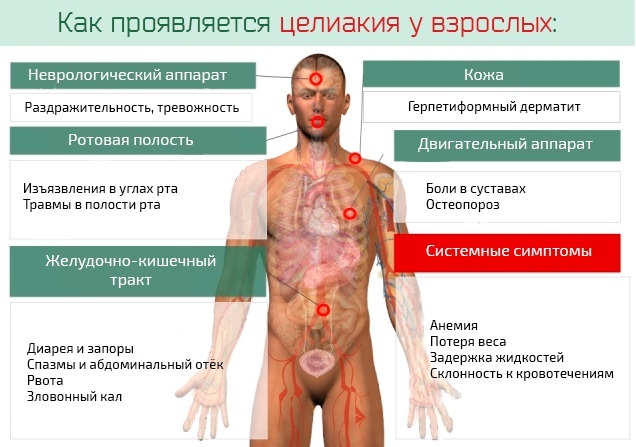
A gluten test is prescribed if the patient complains of the following symptoms:
- abdominal pain;
- diarrhea;
- signs of anemia;
- a sharp loss of body weight;
- multiple caries;
- hemorrhage in the lower extremities and peritoneum;
- infertility;
- a constant feeling of thirst, which is difficult to quench;
- joint and muscle pain;
- stomatitis;
- dermatitis;
- glossitis;
- anxiety, frequent mood swings;
- dizziness;
- increased sweating;
- fast fatiguability;
- black shade of feces.
Very often, gluten intolerance is diagnosed in children.
In them, the following symptoms may indicate an ailment:
- unnatural bloating;
- irritability;
- tearfulness;
- refusal to eat;
- loose stools;
- feces with fatty inclusions, has a persistent unpleasant odor.
With these symptoms, be sure to seek help from a family doctor or pediatrician.
How is it determined
There are several immunological studies that can help test the body's response to gluten (gluten). Celiac disease is derived from the Greek word for abdominal. With a systemic disease in the body, the production of special enzymes required for the complete breakdown of proteins is reduced.
As a result, the remnants of unbroken gluten are deposited on the intestinal walls and cause fermentation. Food acids corrode mucous membranes and tissues, provoking inflammation, nutrients are not absorbed and the general condition deteriorates significantly. Gluten intolerance is often confused with other pathologies affecting the digestive system.
The disease manifests itself in the form of the following symptoms:
- bloating;
- weakness;
- a sharp loss of body weight;
- lack of appetite;
- nausea;
- heaviness in the stomach;
- belching.
The gluten intolerance test consists of several laboratory tests. Several types of globulins are actively involved in the immune response of the human body, but modern techniques are focused on two of them: Ig A and Ig G.
It is these indicators that make it possible to obtain more accurate data on the state of the intestine than, for example, Ig E is a globulin that attacks allergens. Antibodies can be determined by taking blood from a vein for analysis. Research cost from 500 rubles.
Often the disease is disguised as other autoimmune or genetic diseases, such as diabetes, Crohn's disease or Down's syndrome. Therefore, at the first examination, the therapist must determine the patient's body weight, tissue elasticity, the presence of puffiness, muscle tone, examine and feel the abdomen. And after the examination, the doctor can prescribe a comprehensive examination, which consists of 3 studies.
Helping to accurately identify whether there is a reaction to gluten or not:
-
Serodiagnostics. In the laboratory, blood serum is studied and the amount of antibodies in it is determined. Determine the level of TSH - the enzyme responsible for the breakdown of gluten, EMA - is responsible for the connective tissue located between the muscle fibers, AGA - the protein component of gluten. The test for AGA is considered especially effective, its accuracy is about 95%, if the level of these antibodies is high, then the diagnosis is confirmed. The cost of the examination on average fluctuates around 1000 rubles.
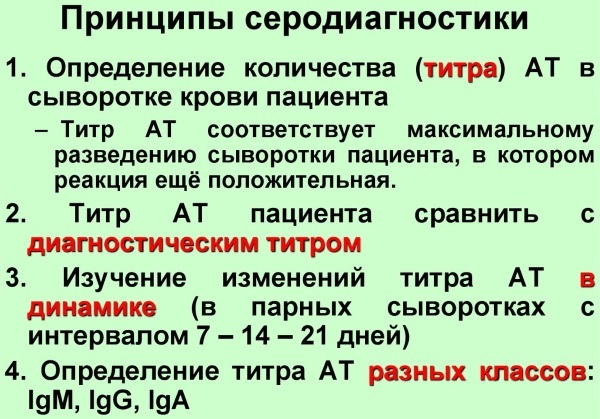
- Endoscopy. It will help to examine carefully every centimeter of the digestive tract from the inside using a special probe. The cost of the examination is from 500 rubles.
- Biopsy. A specialist uses endoscopy or gastroscopy to take a tissue sample from the digestive tract, which, after research, will help determine if there are deviations that would indicate the presence celiac disease. A piece of tissue is stained with special reagents, and then examined under a microscope. If small villi are observed with the presence of glandular epithelium, then the disease is present. In a difficult situation, the villi may not be observed at all; in this case, it will no longer be possible to restore the absorbing function of the intestine. The cost of the examination is from 2000 rubles.
- Stool analysis. This test will help identify celiac disease from food debris. The analysis can be passed in any laboratory at the clinic.
Tests for gluten intolerance can include other types of research to get a more accurate picture:
- General blood analysis. A reduced level of red blood cells and hemoglobin indicates the presence of anemia.
- Total protein test. Decreased levels are malabsorption.
- Albumin test. It is part of the total amount of protein in the body. The quantity may be low.
- Electrolyte analysis. Disruptions in the level of sodium, potassium and chlorine indicate malabsorption.
- Coprogram. May indicate malabsorption.
Human gluten intolerance tests also include genetic tests. The goal of this study is to find markers closely related to celiac disease. The DQ2 and DQ8 genes of the human tissue compatibility system act as markers of the disease.
Such tests are rarely used and are only useful if they are. If you need to screen families that fall into the high-risk category. Positive test results are not able to confirm the diagnosis, since a third of the population has these markers in the blood, but a negative result can completely exclude the presence of the disease.
A doctor or an allergist can prescribe a full examination and make an accurate diagnosis.
Preparation and analysis
To get the most reliable data on the study, you need to properly prepare for it, following a few simple rules.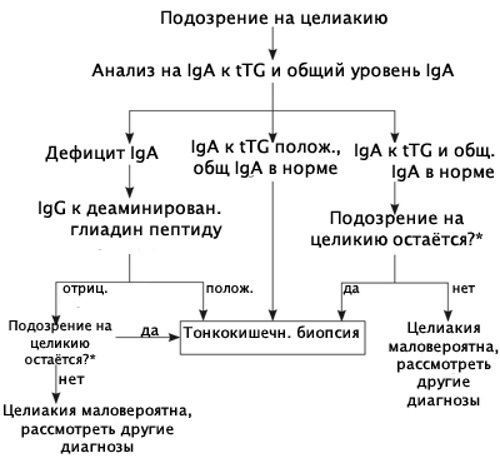
Prepare for the delivery of the biomaterial as follows:
- Blood sampling from a vein is carried out only on an empty stomach. The last meal should be no later than 8 hours before visiting the laboratory. If a gluten-free diet was recommended to the patient, then 2 days before blood sampling, it must be abandoned.
- It is forbidden to drink tea, juice or coffee before taking blood. It is allowed to drink no more than ½ tbsp. still water.
- The doctor must be notified of what medications the patient is taking. Your doctor may decide to stop taking some of them. If the patient cannot do without drugs, then the specialist will take this fact into account when decoding the analysis.
Also, 2 days before the test, you should avoid any stress. Instability of the psyche can give an inaccurate result and it will be difficult to make a diagnosis.
Decoding the results
After passing the examination for gluten intolerance, a specialist is taken to decipher the data obtained. Only he is able to give a competent conclusion based on all the data obtained.
In a biochemical blood test, an ailment may indicate a decrease in the level of minerals, such as iron, sodium, calcium. Significant changes in glucose tolerance are noticed, the level of total protein decreases, and the prothrombosis time is significantly increased.
In the analysis of feces in a patient with celiac disease, consistency is noticeable, the level of fat is higher than normal. Histology indicates intestinal mucosal atrophy, and immunology helps detect specific antibodies.
Gluten intolerance tests include 8 studies that recommend going through. All of them are described in the table below, where you can also find out the norm and features of the study.
| Study | Norm | Peculiarities |
| Serum for total IgA | 10-15% of the total number of immunoglobulins in the blood | With its help, you can identify anemia. It is indicated by low hemoglobin and erythrocytes. |
| Saliva for secretory IgA | Scraping from the inside of the cheek can help determine the presence of genes that are responsible for the development of celiac disease. | |
| Antibodies to gliadin | For an adult 0-25 U / ml, for a child 0-45 | Increased rates indicate the development of celiac disease. |
| Antibodies to tissue transglutaminase | 0-8 | High scores indicate illness. |
| Endomysium antibodies | Endomysium is a protein that is part of the connective tissue. With gluten intolerance, there is an active production of antibodies to the protein. | |
| Genotyping | This genetic typing helps to identify how much the risk of developing hereditary diseases is increased. |

After examination, some patients do not have celiac disease, but an allergy to cereals. With this diagnosis, the clinical picture differs from celiac disease and depends on how the allergen entered the body.
In this case, the following symptoms may indicate an ailment:
- rash on the skin;
- respiratory dysfunction;
- runny nose.
In severe cases, the patient may experience anaphylactic shock. More often, a similar condition is observed in people whose body has got an allergen, and it is subjected to serious physical exertion.
When to see a doctor
An adult or a child should seek help from a gastroenterologist, therapist or pediatrician if he has had diarrhea for 2 weeks. The child may have an unnatural pallor, he is too irritated, does not gain weight well, he has a too large, protruding stomach, or feces with a too fetid odor.
It is imperative that you consult your doctor before embarking on a gluten-free diet. Otherwise, the survey data will be inaccurate.
If celiac disease is diagnosed in one family member, then everyone needs to be examined, since this ailment can affect everyone. You should also get tested for those who are at risk, for example, a person has been diagnosed with type 1 diabetes.
Before going to the doctor, you definitely need to prepare:
- Eat only those foods that were previously included in the diet. To start dietary nutrition only if it is recommended by a specialist.
- It is imperative to write down the date of the onset of the first symptoms and describe what exactly manifested itself earlier and how events developed further.
- Write down all key personal information, in which it is imperative to indicate whether there have been stressful situations and what kind of life changes have occurred.
- Make a list of all drugs, vitamins and dietary supplements that the patient is currently taking.
- Make a list of questions that you will need to ask at the doctor's appointment in order to fully assess the situation and understand what to do in the future.
Possible complications
If in a timely manner, at the first symptoms, seek qualified help from a specialist, then the prognosis for a person with gluten intolerance is favorable. The main method of therapy is a diet that does not include cereals, because it is they that contain this type of protein.
If you strictly adhere to the diet, then all the symptoms will completely disappear after six months. It is important to remember that if a person is diagnosed with celiac disease, then he will have to adhere to the diet for the rest of his life.
If a child has the first alarming symptoms, you should immediately seek help from a pediatrician and undergo a full examination. In young children, this disease can not only pose a serious threat to health, but also lead to death. A blood test should be done as early as possible.
The human immune system has a serious function - the protection of all organs. If a person has gluten intolerance, then the immune system perceives it as a pathogen and meets it with protective immune complexes.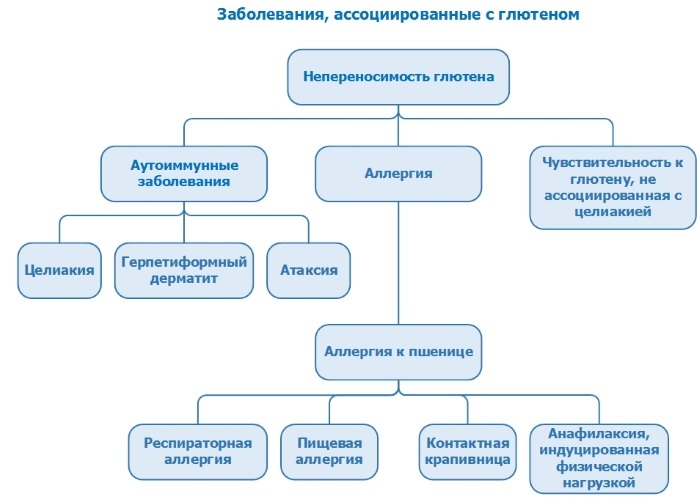
The walls of the human intestine are covered with small villi, which increase the area of contact with food and enhance the absorption of nutrients.
Immune complexes acting on the intestines provoke inflammation, which negatively affects the mucous membrane. As a result, the villi are severely affected, so the food is poorly absorbed. As a result, bowel function is disrupted, diarrhea and bloating appear.
Celiac disease leads to a decrease in the level of red blood cells, hemoglobin, which carries vital oxygen through the cells.
Reducing the absorption of nutrients in the intestines, disrupts the work of hormonal levels. This also negatively affects the work of the reproductive system. In women, gluten intolerance can manifest itself in the form of delayed sexual development, disruptions in the menstrual cycle, infertility, and not carrying a fetus.
Immune complexes negatively affect the musculoskeletal system, brain functions, kidney and liver function, and the condition of the skin. So the bones become denser - osteoporosis develops, or vice versa, they become soft - osteomalacia.
As a result, a person's risk of fractures increases several times. Joint pains appear, caries is actively developing, limb numbness, depression, frequent headaches and rapid fatigue are observed.
The problem with celiac disease is that there is not a single specific symptom that could point to the disease itself. In addition, celiac disease can be asymptomatic.
Often gluten intolerance occurs in diabetes mellitus, epilepsy, Addison's disease, autoimmune myocarditis, hepatitis, cholangitis, Down syndrome, Shereshevsky-Turner and Sjogren, neuropathy, ulcerative colitis and Crohn's disease. If a child has one of these diseases, he is at risk of developing celiac disease.
The tests that are recommended for patients for gluten intolerance will help to pinpoint exactly what a person is suffering from, from celiac disease or whether it is an allergy. Only strict adherence to the doctor's recommendations and adherence to a diet will help avoid serious complications.
Celiac Disease Diagnosis Videos
Laboratory diagnosis of celiac disease:

